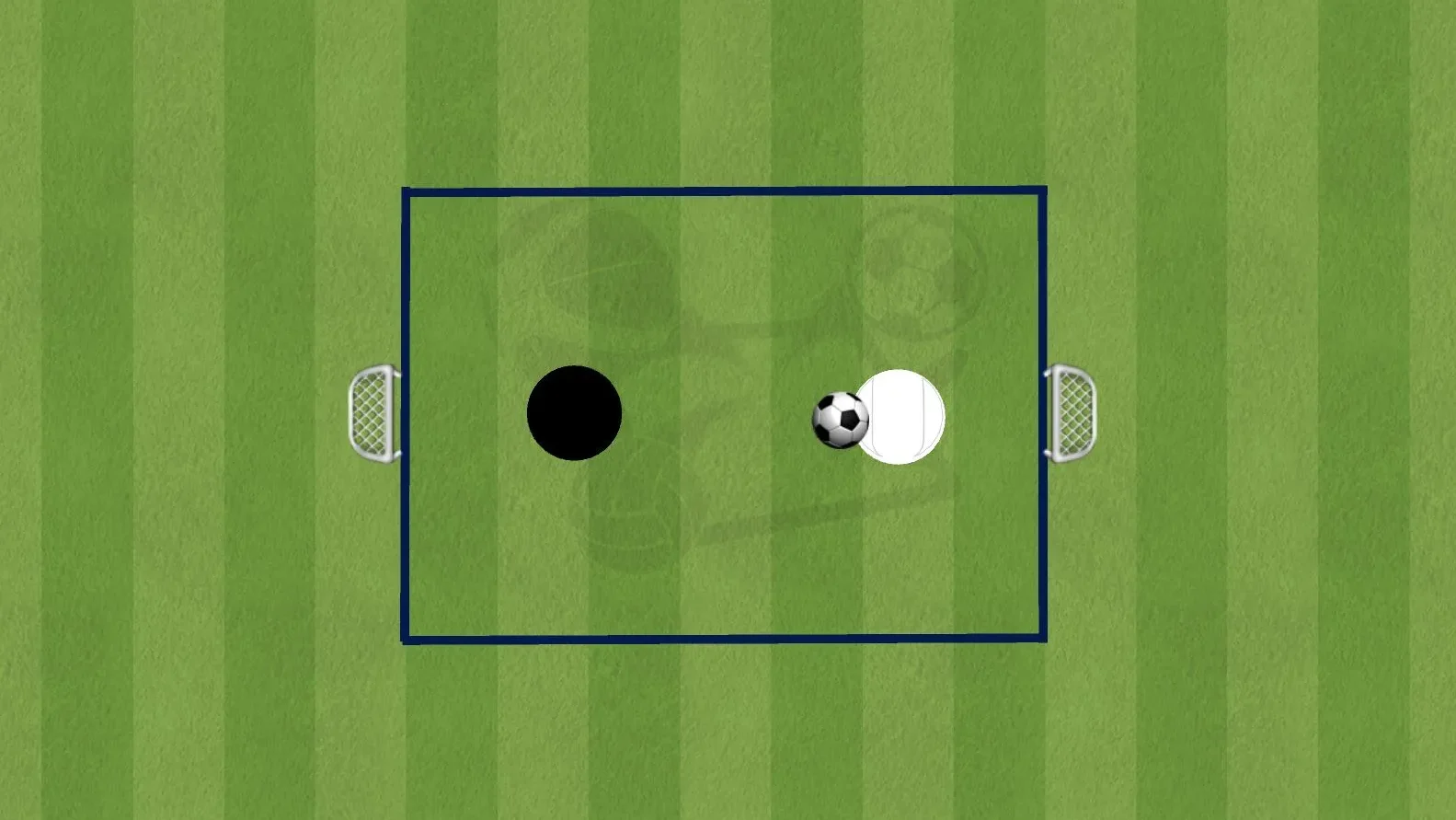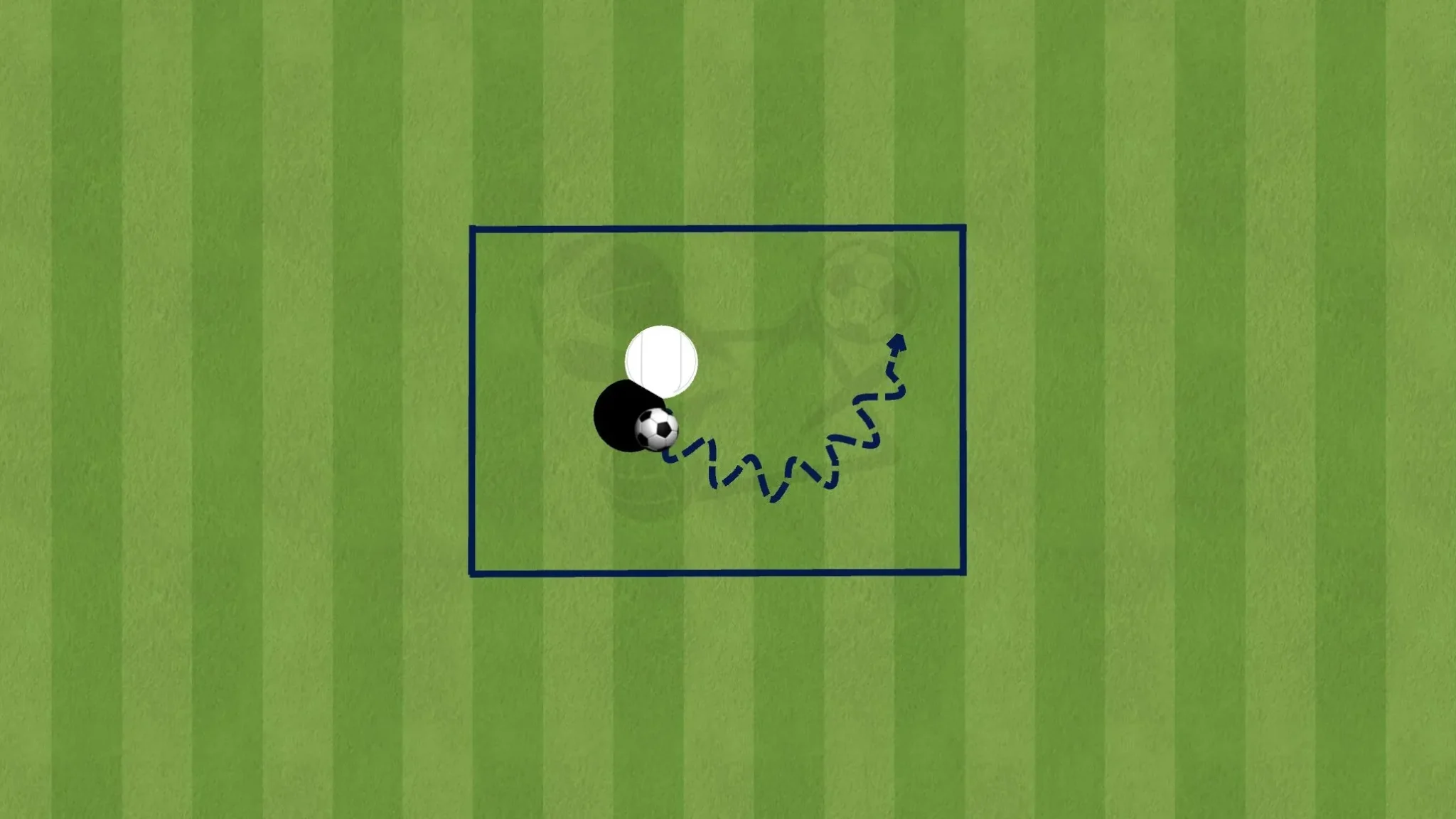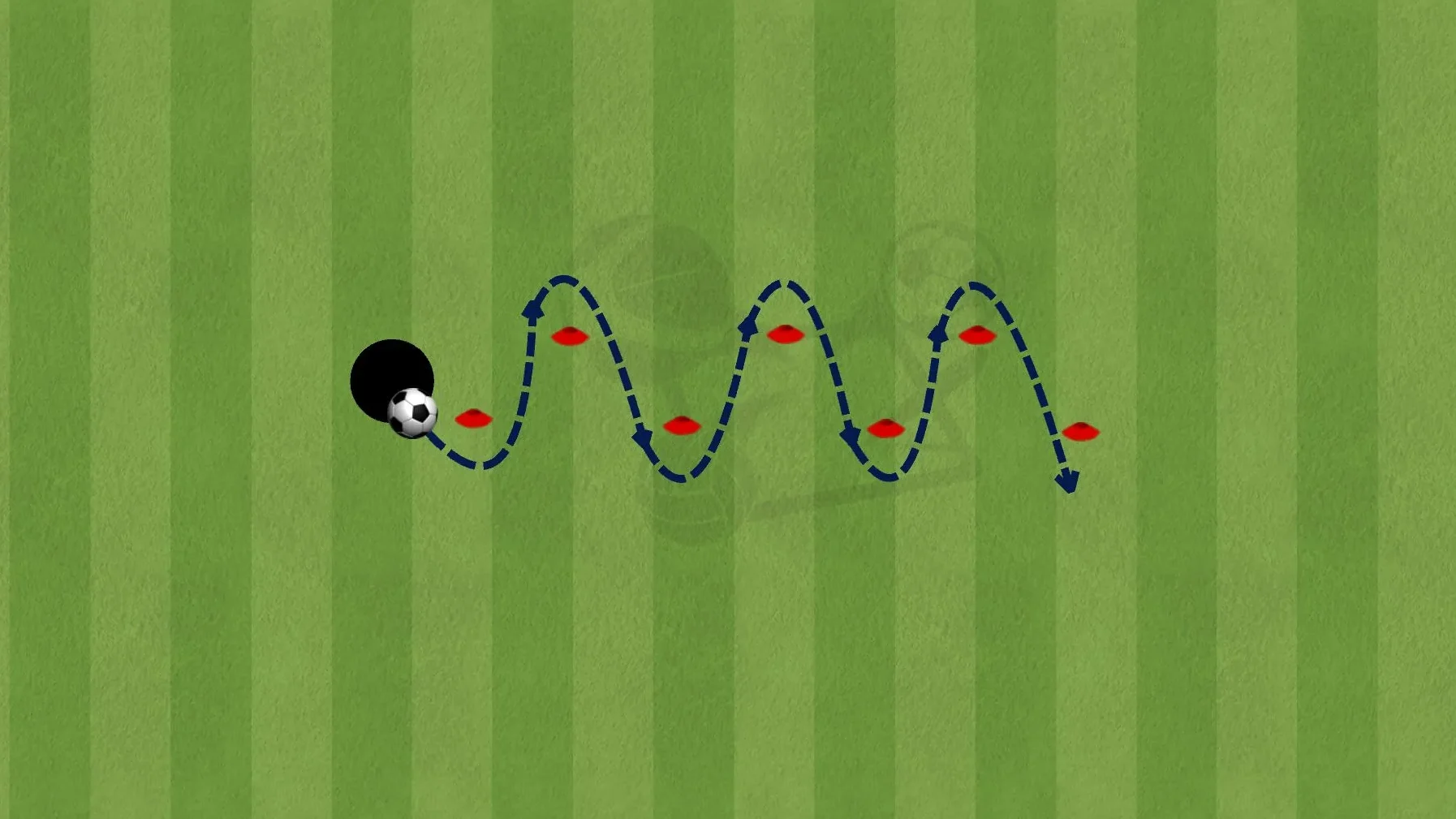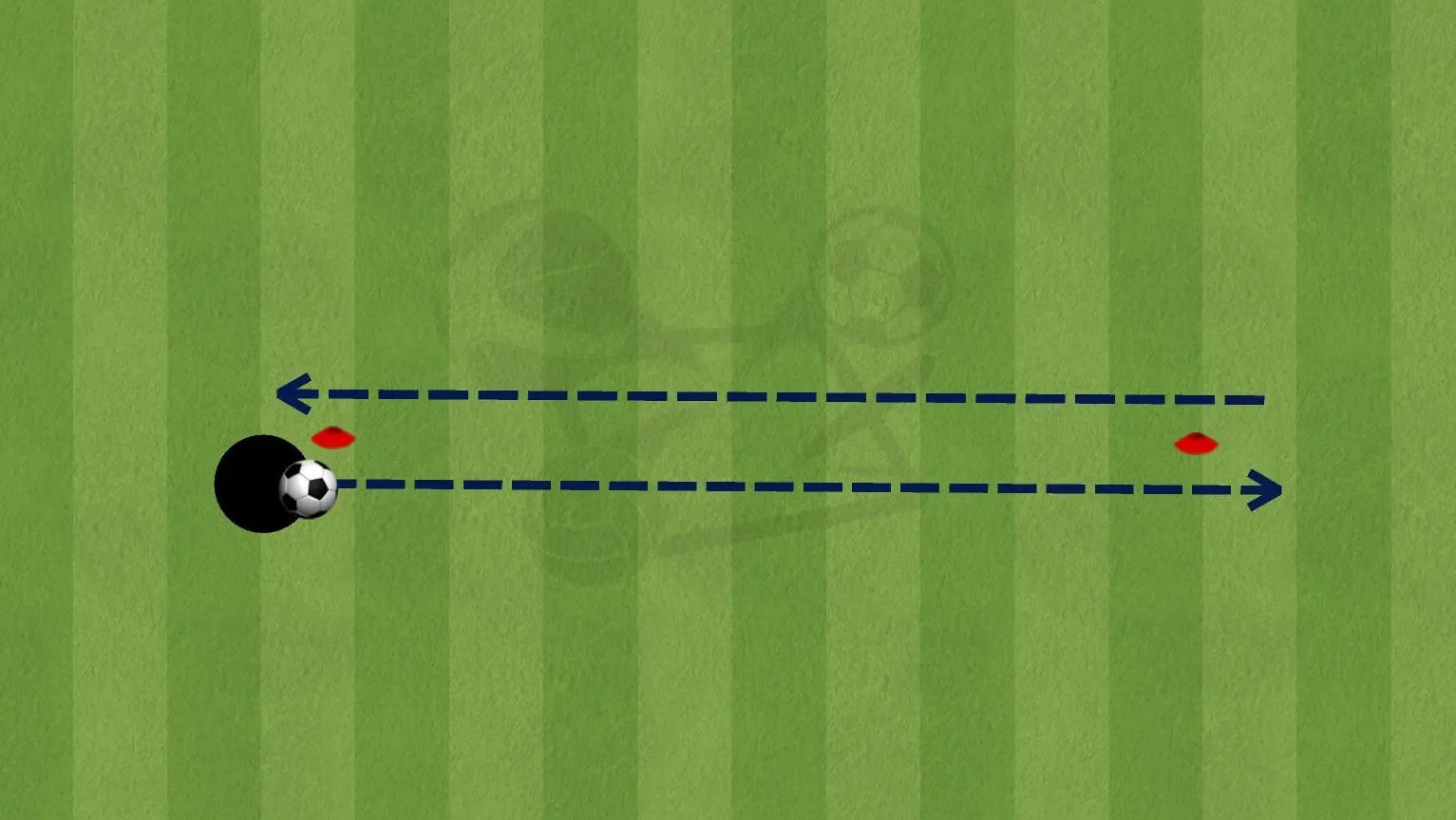Dribbling is one of the most fundamental skills in football, allowing players to bypass defenders, create space, and maintain possession under pressure. Whether you are a winger aiming to take on fullbacks, a midfielder maneuvering in tight spaces, or a forward looking to break through defensive lines, improving your dribbling ability is essential.
In this article, we will explore a range of drills designed to enhance ball control, agility, and decision-making in dribbling situations. These exercises will help you develop quick footwork, improve your ability to change direction at speed, and maintain composure under pressure.
Why Dribbling is Important in Football
Dribbling is a key component of attacking play, allowing players to progress the ball, escape defensive pressure, and create goal-scoring opportunities. Some of the best dribblers in the world, such as Lionel Messi, Neymar, and Vinícius Júnior, use their close control and quick footwork to manipulate defenders and break down compact defensive structures.
The ability to dribble effectively relies on several key elements:
- Close ball control – Keeping the ball within reach to adjust movements quickly.
- Body feints and quick changes of direction – Using deception to unbalance defenders.
- Acceleration and deceleration – Controlling speed to gain an advantage over opponents.
- Awareness and decision-making – Knowing when to dribble, pass, or shield the ball.
By working on these aspects through structured drills, players can develop better control, increase their confidence in one-on-one situations, and become more effective in attacking play.
Dribbling Drills to Improve Ball Control and Agility
1. Cone Dribbling – Improving Close Control
This drill focuses on improving a player’s ability to keep the ball close while weaving through obstacles at different speeds. It develops precise ball control and foot coordination, which are crucial for maintaining possession in tight areas.
How to do it:
- Set up a row of 6 to 10 cones in a straight line, with each cone spaced about one meter apart.
- Start at one end and dribble through the cones using short, controlled touches.
- Use the inside and outside of both feet to guide the ball through the gaps.
- Focus on keeping your body low and maintaining balance while moving through the cones.
- Repeat the drill at different speeds and increase the difficulty by using only one foot at a time.

Coaching tips:
- Keep your touches light and controlled to prevent the ball from getting away.
- Look up periodically to improve scanning ability while dribbling.
- Challenge yourself by reducing the space between cones as you improve.
This drill is particularly effective for midfielders and attackers who need to navigate tight spaces during games.
2. 1v1 Dribbling – Beating a Defender
This exercise replicates real-game situations where a player must beat an opponent in a one-on-one duel. It emphasizes skill moves, changes of direction, and the ability to accelerate past a defender.
How to do it:
- Set up a small playing area (about five meters by five meters) with a goal or target area at one end.
- One player acts as the attacker and starts with the ball, while the other player is the defender.
- The attacker’s objective is to dribble past the defender and reach the target area.
- The defender must stay active and try to delay or win possession.
- Rotate roles and vary the attacking strategies by using different dribbling moves such as stepovers, body feints, or sudden changes of direction.

Coaching tips:
- Attack the defender at speed to force them into making a decision.
- Use your body to shield the ball when under pressure.
- If the defender is aggressive, use quick turns and changes of direction to evade them.
- If space is limited, focus on small, controlled touches to maintain possession.
This drill is especially useful for wingers and strikers who need to take on defenders in attacking areas.
3. Dribbling with Resistance – Strengthening Balance and Control
Dribbling under physical pressure is an essential skill for maintaining possession in crowded areas. This drill helps players develop strength, balance, and the ability to protect the ball while dribbling.
How to do it:
- Pair up with a teammate and set up a small grid, approximately ten meters by ten meters.
- One player dribbles while the other applies light shoulder-to-shoulder resistance.
- The dribbler must navigate around the grid while maintaining control of the ball.
- Increase the level of resistance gradually to simulate real-game physical challenges.

Coaching tips:
- Keep a low center of gravity to maintain balance.
- Use your arms to shield the ball and maintain stability.
- Stay composed under pressure and focus on making quick but controlled dribbling movements.
This drill is highly effective for midfielders and forwards who often have to hold off defenders while progressing the ball.
4. Zig-Zag Dribbling – Enhancing Agility and Direction Changes
Quick changes of direction are essential for beating defenders and creating space. This drill trains players to make sharp cuts while maintaining ball control.
How to do it:
- Set up cones in a zig-zag pattern, with each cone spaced two to three meters apart.
- Dribble through the cones, making sharp cuts at each cone to change direction.
- Focus on quick footwork and explosive movements when changing direction.

Coaching tips:
- Stay light on your feet and be ready to react quickly.
- Keep your touches close to the ball to maintain control.
- Use both feet to develop balance and coordination.
This drill is particularly beneficial for wingers and attacking midfielders who rely on agility to navigate through defensive setups.
5. Speed Dribbling – Developing Explosive Acceleration
Speed dribbling is crucial for breaking defensive lines and launching counterattacks. This drill focuses on maintaining ball control while sprinting at high speed.
How to do it:
- Set up two cones 20 meters apart to create a dribbling track.
- Dribble from one cone to the other as fast as possible, using longer but controlled touches.
- Focus on pushing the ball forward with the laces while maintaining balance.

Coaching tips:
- Stay slightly leaning forward to generate momentum.
- Keep control over the ball while accelerating.
- Gradually increase the distance to build endurance and stamina.
This drill is particularly valuable for wingers and strikers who need to drive the ball forward in attacking transitions.
Integrating Dribbling Drills into Training
To maximize improvement, players should incorporate dribbling drills into their training sessions multiple times per week. Key considerations include:
- Repeating drills regularly to build muscle memory.
- Simulating real-game conditions by increasing speed and defensive pressure.
- Practicing with both feet to develop ambidexterity.
- Combining dribbling with passing or shooting to make drills more match-relevant.
By consistently working on dribbling skills, players can enhance their ability to control the ball under pressure, navigate defensive structures, and create more attacking opportunities.
Conclusion
Dribbling is a skill that can significantly impact a player’s effectiveness on the pitch. Whether you are looking to improve your close control, agility, or ability to beat defenders, these drills will help you develop the technical and physical qualities required for high-level dribbling.
By dedicating time to structured training and focusing on key details, players can refine their dribbling ability and become more confident in one-on-one situations. Now, it’s time to hit the training ground and start mastering the art of dribbling.
